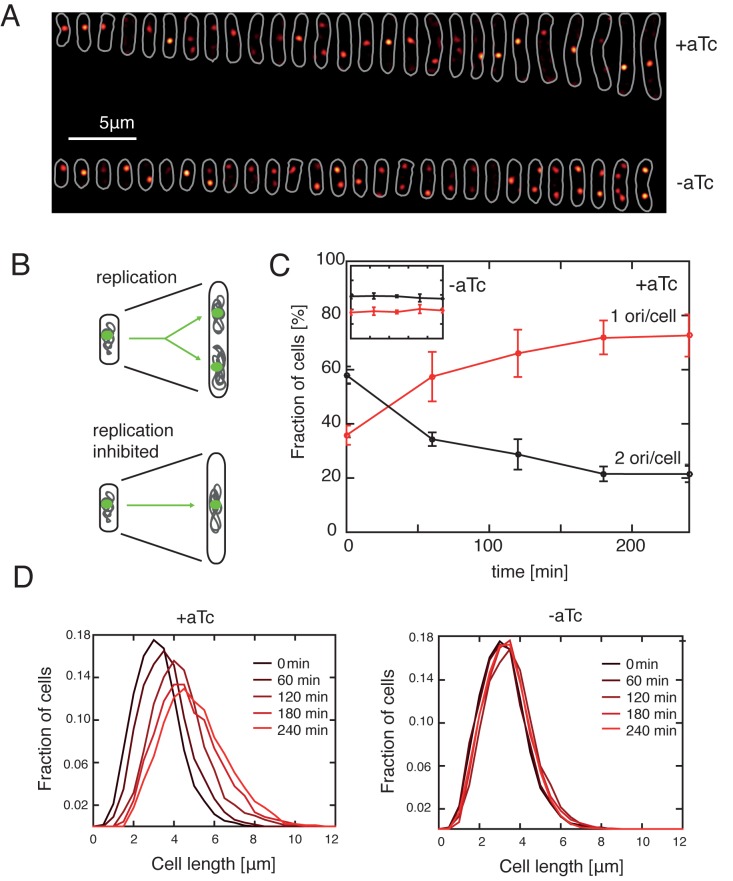Figure 4.
CRISPR/dCas9deg3 binding to the origin of replication inhibits the initiation of replication but not the cell growth. (A) Representative images of individual cells grown in M9 glucose at 37°C with (top stripe) or without 200 ng/ml of aTc (bottom stripe). All cells images were collected at 240 min after the beginning of induction. White color denotes the cell outlines obtained with microbeTracker software. Red spots denote the oriC loci LacI-tagGFP labels. Cells were lined up from the shortest to the longest and are a representative of the bacterial population. Background has been subtracted. (B) Inhibition of replication leads to an arrested cell phenotype. Arrested cells do not replicate the DNA (hence have one chromosome), but stay metabolically active and increase in size. Green – oriC; gray – DNA. (C) CRISPR/dCas9deg3 system arrests the cell population, yielding cells with one chromosome. After the addition of 200 ng/ml of aTc the population of cells with only one oriC focus is increasing, and saturates to a fraction larger than 70% after 180 min. Population cultured without the CRISPR/dCas9deg3 induction maintains stable level of oriC content. Cells were grown in M9 glucose in 37°C. Error bars indicate SD for three independent experiments for each dataset for each time point, with the exception of t = 240 h, +aTc, where the error bar denotes the mean standard deviation of the dataset. Colors in the inset correspond to those in the main panel. (D) Cell lengths increase after the induction of CRISPR/dCas9deg3-induced arrest. The distribution of lengths of cells in the population is shifting towards longer cells after the induction of arrest. The distribution stabilizes after ∼180 min of induction. Cells are grown as in panels (A) and (C).

